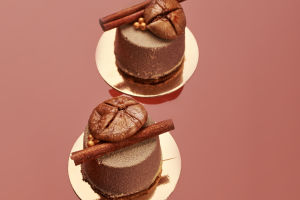Macarons are the epitome of French baking elegance—delicate, crisp, and chewy all at once.
These small, colorful confections are often seen as intimidating to bake, but with the right steps, you can master the art of making macarons.
Let's dive into how to create these mouthwatering, melt-in-your-mouth treats that will surely impress your friends and family.
What You Need to Make Macarons
To start your macaron journey, you'll need a few key ingredients:
Egg Whites: It's essential to age your egg whites. This may sound strange, but separating the whites from the yolks and letting them rest in the fridge for a few days is the secret to achieving the perfect meringue.
Almond Flour: A key ingredient that gives macarons their distinctive flavor and texture. Most brands offer "super-fine" almond flour, but it's a good idea to sieve and process it further to get an even smoother texture.
Powdered Sugar: Helps to sweeten and add a smooth texture to the cookie shells.
Step-by-Step Guide to Perfect Macarons
Making macarons involves patience and precision, but the result is worth the effort. Here's how to do it:
Sift and Process the Dry Ingredients
Start by sieving the powdered sugar and almond flour into a bowl. Whisk the mixture together, and then give it a quick whirl in the food processor. Sift again, repeating the process two more times. This step is crucial for achieving that smooth, iconic top on each macaron shell.
Make the Meringue
Whip your egg whites with a pinch of cream of tartar until soft peaks form. Gradually add sugar to the mixture while continuing to whip. Once stiff peaks form, add in any desired food coloring and vanilla extract.
Fold in the Dry Ingredients
Now, fold the almond flour mixture into the meringue. This part is called "macaronage," and it's where the magic happens. You'll want to use a gentle circular motion to combine the two mixtures. The batter should have a thick, lava-like consistency and flow slowly off the spatula, forming a ribbon.
Piping the Macarons
Transfer the batter into a piping bag fitted with a round tip, and pipe small, uniform circles onto a parchment-lined baking sheet. Tap the tray on the counter to release any air bubbles. Let the macarons rest for 40-60 minutes until they form a dry skin on the surface.
Bake the Macarons
Preheat your oven to 300°F (150°C) and bake the macarons for 12-15 minutes. The shells should feel firm to the touch and not wobble when you move them. Allow them to cool completely before transferring them to a wire rack.
Filling Your Macarons
Now comes the fun part—filling these delicate cookies! The traditional French macaron filling is a smooth buttercream, but the possibilities are endless. From whipped ganache to fruit curds or even ice cream, feel free to get creative.
Tips for Success
Making macarons can be a finicky process, but with a little patience, anyone can master it. Here are a few tips to ensure your macarons turn out perfectly every time:
Age your egg whites: The aging process helps remove excess moisture, making it easier to whip up stiff peaks.
Check your consistency: During the macaronage process, make sure the batter drips off the spatula in a thick ribbon. It should form a figure 8 without breaking.
Room temperature matters: Macarons are sensitive to humidity and temperature. On humid days, add a little extra time for resting, and avoid making them when it's too hot or too cold.
Making macarons may take some practice, but once you get the hang of it, these little treats will become a fun and rewarding challenge. Whether you're baking for a special occasion or simply craving something delicious, these macarons will never disappoint.


